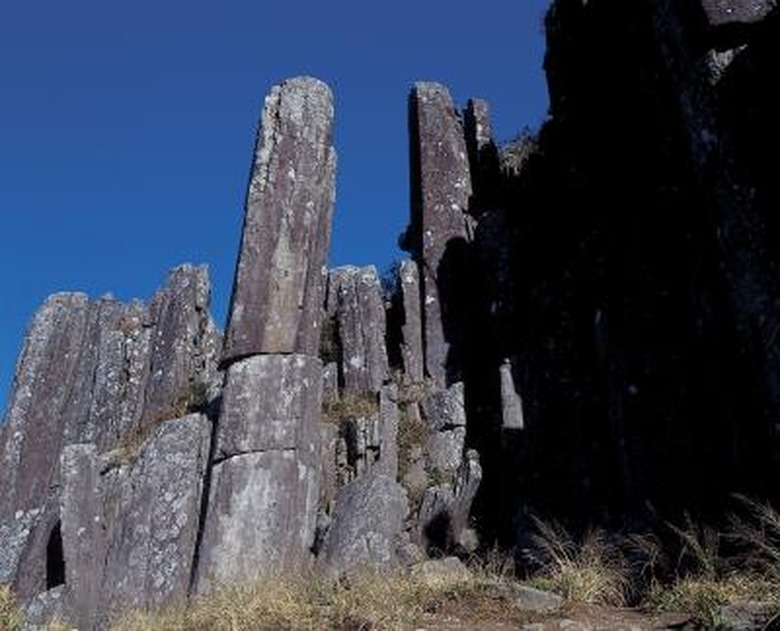How To Identify Basalt
Basalt, a volcanic igneous rock, occurs worldwide, but especially in India, Scotland, Greenland, Iceland, Canada and the northwestern United States. Most basalt occurs as lava flows, in narrow dykes or sills. It's the basalt from lava flows that make up the enormous sheets of a lava plateau. This rock is easy to identify.
Step 1
Note the rock's color. Basalt appears black or grayish-black, sometimes with a greenish or reddish crust.
Step 2
Feel its texture. Basalt consists of a fine and even-grain. The dense rock has no crystals or minerals discernible to the naked eye. When freshly broken, basalt has a dull surface.
Step 3
Determine its structure with your naked eye or a microscope. Often vesicular or amygdaloidal, basalt has columnar jointing.
Step 4
Examine your rock's composition with a microscope. Basalt occurs more often as pyroxene (shiny, black) and as plagioclase (tabular, white-gray). The presence of olivine gives basalt a green, glassy appearance and is called olivine basalt. Also present may be iron ore (ilmenite and/or magnetite) or bronze-colored biottie.
TL;DR (Too Long; Didn't Read)
Varieties of basalt include olivine basalt and quartz basalt, which contains a minuscule amount of quartz. Basalt is used as a source of iron ore, roadstone aggregate, sapphires or native copper.
Cite This Article
MLA
Contributor, . "How To Identify Basalt" sciencing.com, https://www.sciencing.com/identify-basalt-2155819/. 24 April 2017.
APA
Contributor, . (2017, April 24). How To Identify Basalt. sciencing.com. Retrieved from https://www.sciencing.com/identify-basalt-2155819/
Chicago
Contributor, . How To Identify Basalt last modified March 24, 2022. https://www.sciencing.com/identify-basalt-2155819/
